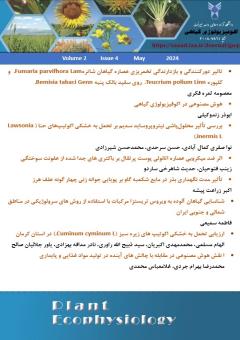The Role of Artificial Intelligence in Addressing Future Challenges in Food Production and Sustainability
Subject Areas : Journal of plant ecophysiology
Mohamad Raza Bahramjerdi
1
![]() ,
Gholam Abbas Mohammadi
2
,
Gholam Abbas Mohammadi
2
![]()
1 -
2 -
Keywords: Artificial Intelligence , Climate Resilience, Precision Agriculture, Resource Management,
Abstract :
Objective: This collection of articles examines the role of artificial intelligence (AI) in transforming the farming and agricultural industries in response to global challenges such as rapid population growth, diminishing farmland, and climate change.
Methods: The articles synthesize current research and case studies that illustrate the implementation of AI technologies in agricultural practices. They analyze how AI can enhance productivity, operational efficiency, and sustainability in agriculture, while addressing the evolving demands of the market and environmental conditions.
Results: The findings indicate that AI has significant potential to revolutionize agricultural production systems by improving output, increasing operational efficiency, and fostering resilience against climate variability. The integration of AI technologies can lead to more sustainable agricultural practices that meet the needs of a growing global population projected to exceed nine billion by 2050.
Conclusions: This body of work contributes to the existing literature by highlighting the transformative effects of AI in agriculture, emphasizing its necessity for future food security, and providing insights into the challenges and opportunities that lie ahead in the agricultural sector.
Aker, J. C., & Mbiti, I. M. (2010). Mobile phones and economic development in Africa. Journal of Economic Perspectives, 24(3), 207-232.
Bennett, C., et al. (2019). The impact of automation on employment: A review of the literature. Journal of Economic Surveys, 33(4), 1175-1198.
Chlingaryan, A., et al. (2018). Machine learning in agriculture: A review. Sensors, 18(8), 2674.
FAO. (2017). The future of food and agriculture – Trends and challenges. Food and Agriculture Organization of the United Nations.
Godfray, H. C. J., et al. (2010). Food security: The challenge of feeding 9 billion people. Science, 327(5967), 812-818.
Kamilaris, A., & Prenafeta-Boldú, F. X. (2018). Deep learning in agriculture: A survey. Computers and Electronics in Agriculture, 147, 70-90.
Liakos, K. G., et al. (2018). Machine learning in agriculture: A review. Sensors, 18(8), 2674.
Mulla, D. J. (2013). Twenty five years of remote sensing in precision agriculture: Key advances and remaining challenges. Precision Agriculture, 14(1), 1-13.
Shamshiri, R. R., et al. (2018). Advances in agricultural robotics: A review. Robotics and Autonomous Systems, 100, 1-14.
Tilman, D., et al. (2011). Global food security and biodiversity. Science, 333(6042), 404-405.
Wolfert, S., et al. (2017). Big data in smart farming – A review. Agricultural Systems, 153, 69-80.
Zhang, C., & Wang, J. (2019). Applications of artificial intelligence in agriculture: A review. Agricultural Systems, 168, 1-12.
Zhang, Y., et al. (2016). Drone-based precision agriculture: A review. International Journal of Agricultural and Biological Engineering, 9(1), 1-10Klumpp, S. and J. Krieglstein. 2002. Phosphorylation and dephosphorylation of histidine residues in proteins. Eur. J. Biochem. 269: 1067-71.


